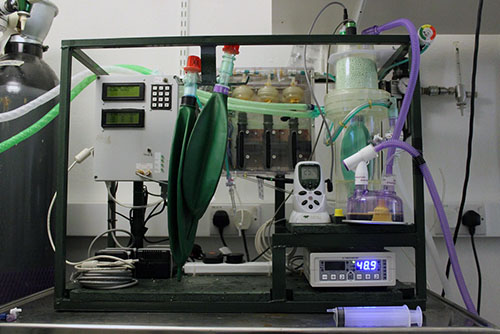HIE is managed using what’s known as therapeutic hypothermia, which involves cooling the body or the brain of the infant down three degrees below normal for 72 hours. This can limit the extent of the injury and allows the brain to recover. However, even with this treatment, half of the infants are prone to disorders such as cerebral palsy, epilepsy or cognitive issues. Thanks to an Elizabeth Blackwell Institute TRACK Translational Acceleration and Knowledge Transfer) award Dr Chakkarapani is looking into new treatments.
Gas protection
Recently, inhaled xenon gas (which acts as an anaesthetic, and has been shown to protect brain cells from damage) has been investigated as a treatment alongside therapeutic hypothermia. In a previous study, Dr Chakkarapani and his colleagues have shown that using the gas for 18 hours along with therapeutic hypothermia can double the brain protection in baby piglets, a model of HIE.
Dr Chakkarapani wondered whether an even longer exposure to Xenon gas - for the whole 72 hours - might yield even better results, although hurdles would need to be overcome, due to the gas’ density and anaesthetic potential. This is where the Elizabeth Blackwell funding came in.
Automatic delivery
Dr Chakkarapani’s team developed an automated xenon delivery device which doesn’t need the continued presence of a critical care physician. After some experimentation, they were able to use the device on post-hypoxic-ischemic pigs for 72 hours with no lung injury. They also collected cardiovascular hæmodynamics and brain function data, which initially suggests that there was no brain damage, nor were there any adverse effects on cardiac output.
Closed circuit xenon delivery for 72h in neonatal piglets following hypoxic insult using an ambient pressure automated control system: Development, technical evaluation and pulmonary effects.
Safety first
The data that the team have gathered suggest that it’s actually possible to administer xenon during cooling for such a prolonged period, and that doing so with their device is safe. However, this is only the first stage - the next step is to establish how effective such prolonged xenon breathing with cooling would be at preventing brain injury after HIE.
Dr Chakkarapani is in the process of developing further grant applications to continue his investigations:

